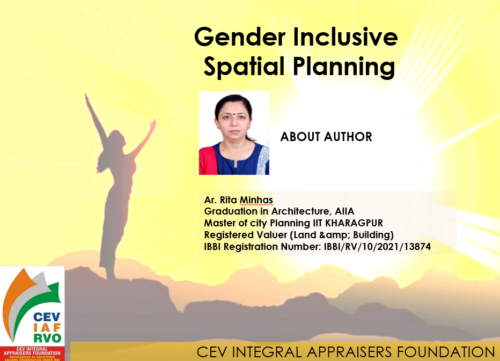“GENDER INCLUSIVE SPATIAL PLANNING”
AUTHOR: AR. RITA MINHAS
For most of human history, it has taken the efforts of both men and women, whether working in the marketplace or in the fields ,or homes , to keep the family afloat. If men were physically strong, women were always there to give them emotional support in form of mothers, wives, sisters and vice versa. Young or old ,women and men have been complementing each other since times immemorial.

Gender safety has always been an issue since the times of Mahabharat and Ramayan. Although earlier women were behind the scenes, but with the onset of industrial revolution parameters changed . Present times witness women performing more challenging roles than ever, managing work and families.
Role of Spatial Planning
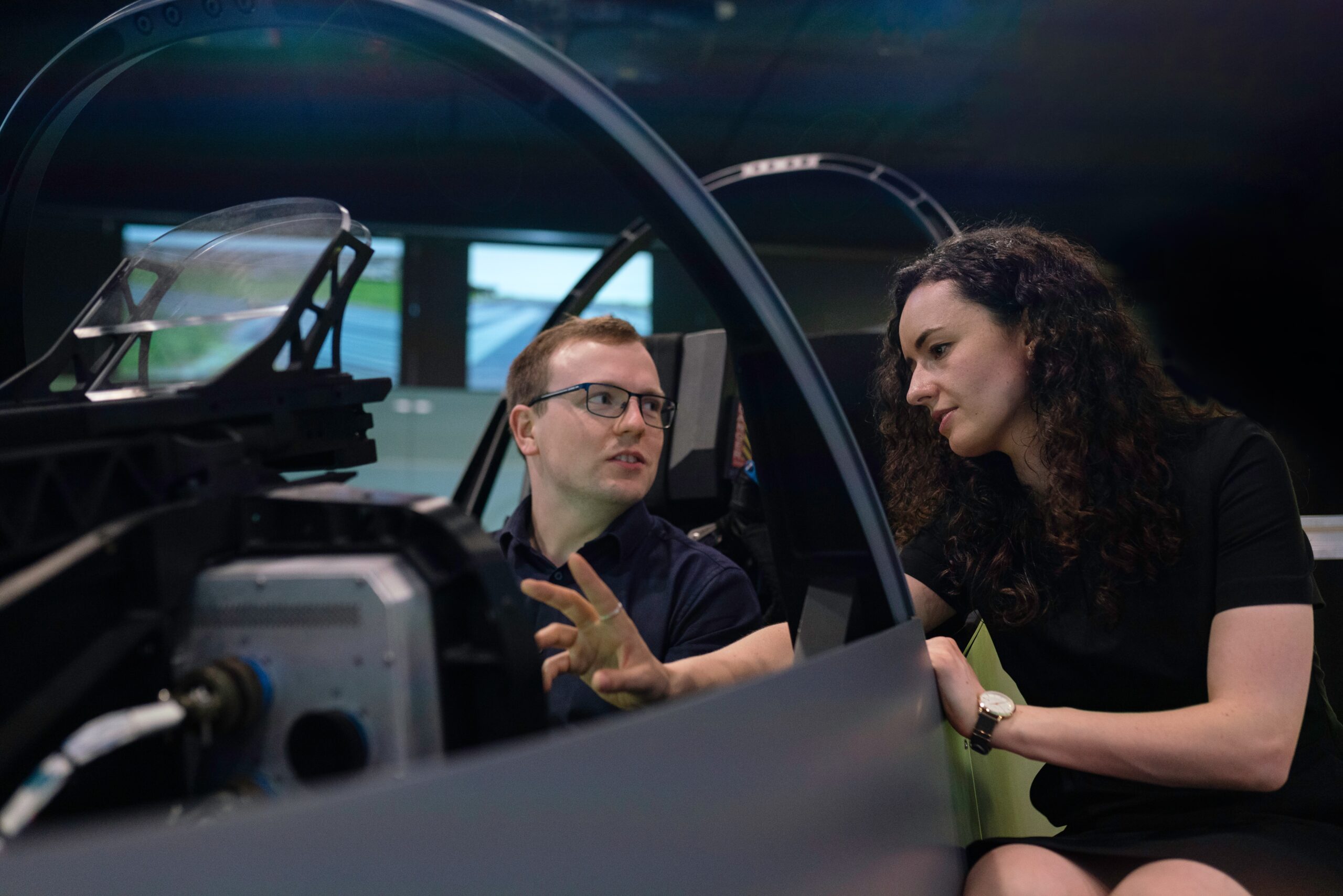
Spatial planning includes land use, urban , regional ,transport and environmental , economic and community planning. Land-use planning provides the spatial setting for government policy , shaping the way our towns and cities are designed. Planning policy tends to ignore the fact that women and men use public space very differently.
Gender Equality ensures that both women and men have equal access to opportunities, resources, and rewards towards promoting sustainable human and national development.
Role of women in society – across civilizations

During ancient times, women played an important role within their homes; however, the way they were viewed within their homes and communities varied greatly within each nation. The women in Babylon had few personal rights and liberties. Egyptians saw families as a source of happiness, giving the women a more important role. Role of women in ancient Rome were to raise the children and take care of the home.
Works by ancient Indian grammarians such as Patatanjali and Katyayana suggest that women were educated in the early Vedic period. During the Vedic period, around 1500 BC, women held an honored place in society, Women could participate in war, gymnastics, public activities, decision-making, and education. Their importance extended beyond the home and their education was mostly equal to men.

Three phases of feminism in India :
The first phase, beginning in the mid-nineteenth century, initiated when European colonists began to speak out against the social evils of Sati.
The second phase, from 1915 to Indian independence, when Gandhiji incorporated women’s movements into the Quit India Movement and independent women’s organisations began to emerge.
The third phase, post-independence, which has focused on fair treatment of women in the work force and right to political parity.
Women in Indian Freedom Struggle :

In 1947, India got Independence from the Britishers. While there was not a single person who worked hard to get Independence, it was a struggle of years, and many lady freedom fighters of India initiated many movements
Amongst all, women were equally active during the pre-independence war. Some of the Indian freedom fighters women’s valor mostly remembered – like Rani Lakshmi Bai became a great example of strength and bravery. There are many women who left their families and even sacrificed their family members to get Independence from British Raj.
It has been more than 75 years since India got its Independence on 15 August 1947. We wouldn’t have got Independence if there were no freedom fighters. Talking about the freedom fighters, women equally supported nationalism. These top female revolutionaries of India have played a pivotal role in gaining Independence.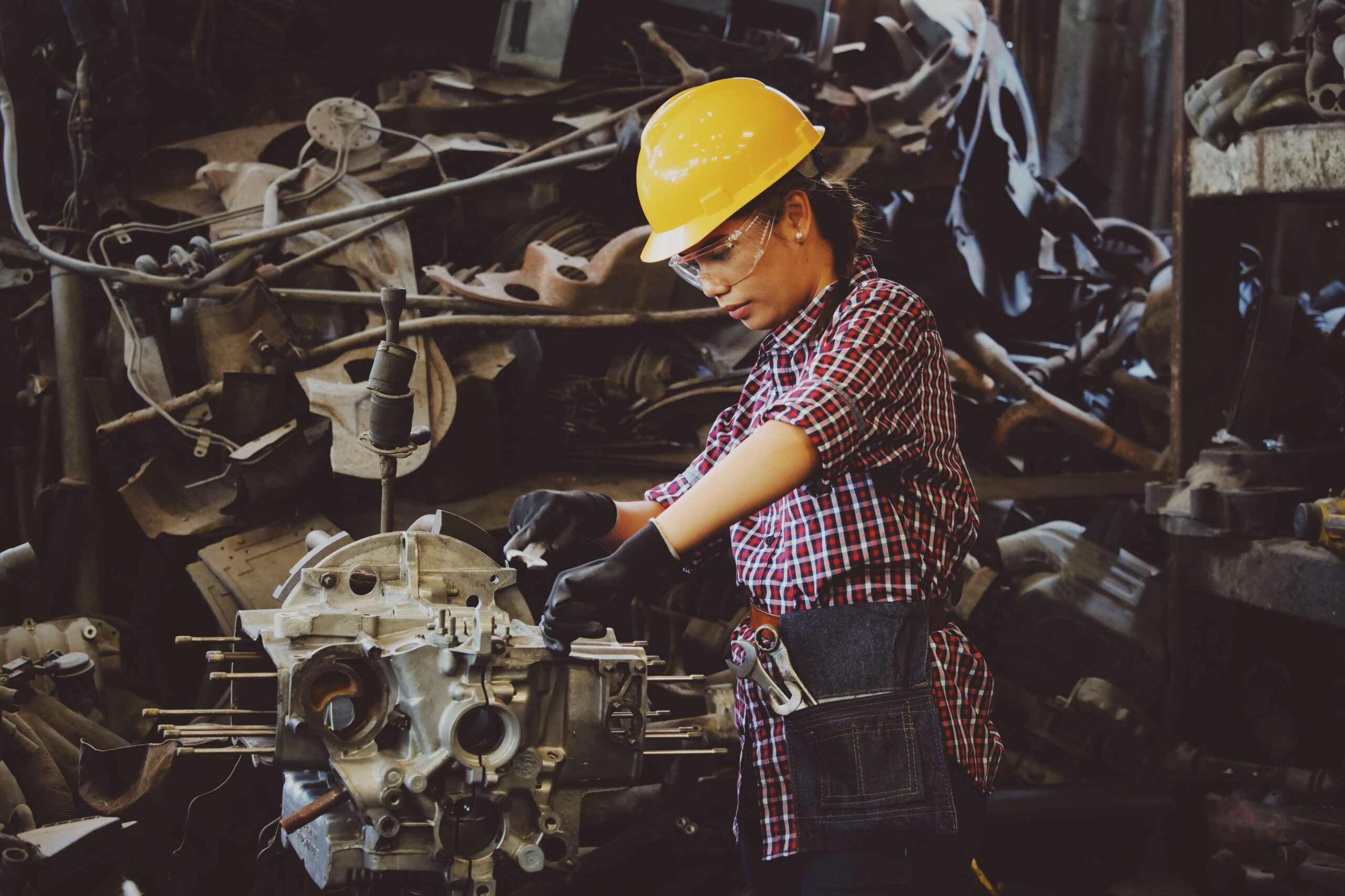 Women in Architecture and Valuation
Women in Architecture and Valuation
Indian architecture is being gracefully shaped by the women of India since the early 1930s. Notable names like Perin Jamshedji Mistri, Eulie Chowdhury, Pravina Mehta and Sheila Sri Prakash have been creating history in the field through their enterprising endeavours relevant from the pre-independent era to the modernist. With changing times and needs, the women of today are redefining an architect’s role by contributing to more verticals than design. Women are actively participating in different fields including Valuation. A good number of women are becoming Registered valuers under companies act , which is very encouraging for all of us.
Why is there any need for gender Inclusive Planning ?
• Gender inclusive planning is important because it creates public spaces where all users have equal opportunity to be healthy, secure and happy.
• It recognises that if women and girls avoid using certain public spaces because they do not feel safe , these spaces will become more insecure for women.
• It promotes the right to the city and to citizenship for women and girls as a condition for equitable and sustainable cities and communities
• To promote Safe public transit for women and girls
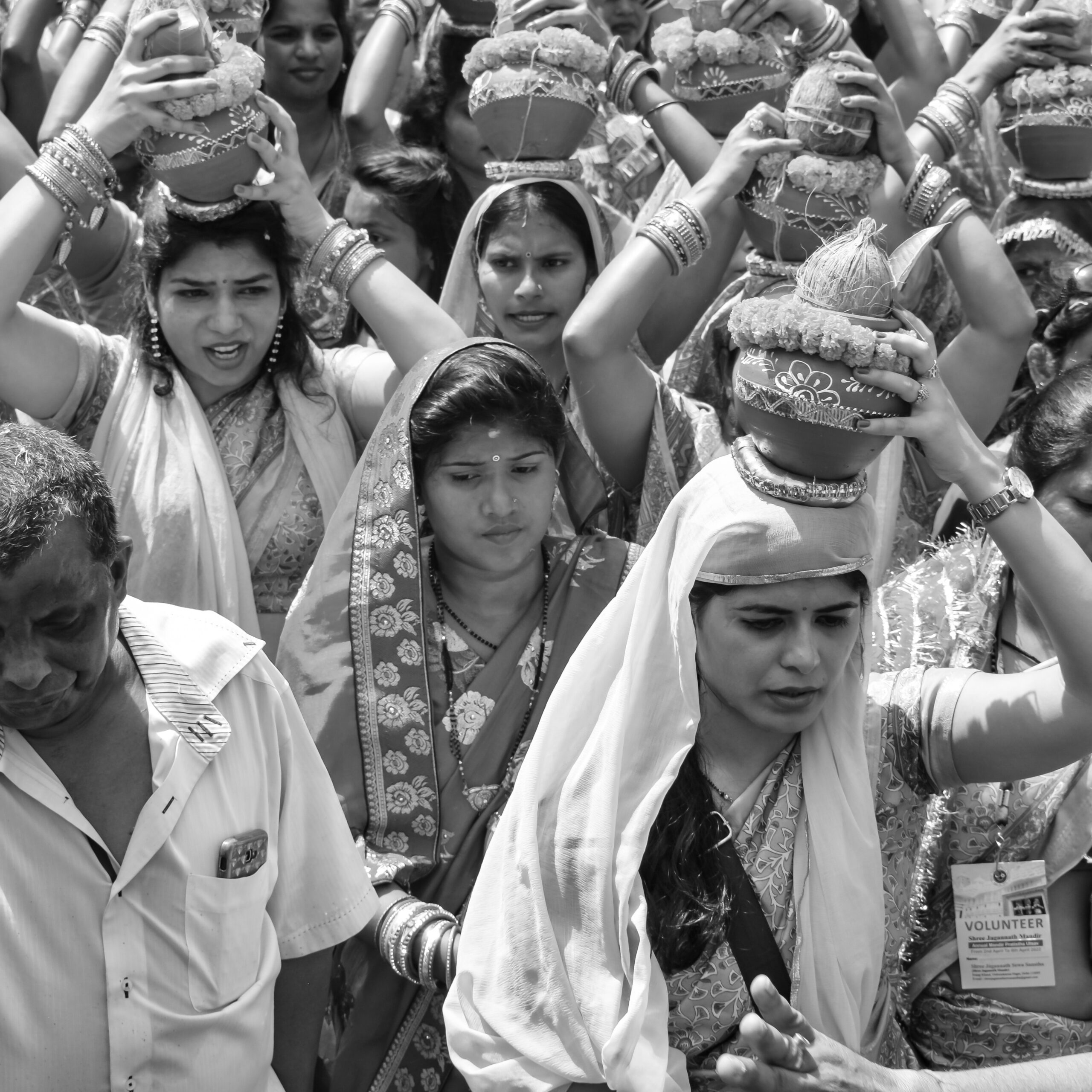
What is safe and inclusive city for women?
• A city where women and girls can enjoy public spaces and public life without fear of being assaulted.
• A city where violence is not exercised against women and girls in either the home or the street.
• A city where women and girls are not discriminated against and where their economic, social, political, and cultural rights are guaranteed.
• A city where women and girls participate in making decisions that affect the community in which they live.
• A city where the state guarantees the human rights of all people without excluding women and girls.
• A city where the state and local government take actions to provide attention, prevention, and punishment for violence against women and girls.
• A city where the state and local government guarantee women‘s and girls’ access to justice.

Some factors that impact the safety of women and girls in the city include:
Poverty and socio-economic status:
Poor women often face heightened safety challenges related to their difficulty accessing essential services. For many of them, especially homeless women, women vendors, and domestic workers, the need to regularly access public spaces and public transport creates heightened vulnerability.
Infrastructure
The availability of safe and clean public toilets for women promotes women’s safety. Toilets that are dark and dirty, with broken doors and no attendants are seldom used by women. Poorly lit areas pose a threat to safety. Walking on dark roads and unlit streets is something most women avoid. Additionally, the lack of street lighting in commercial areas makes it difficult for women to work late. In addition, lack of efficient and safe public transport can make it difficult for women to access the city.
Usages of spaces and familiarity:
The gender of the people using a space affect women’s safety. Jagori’s research found that women in Delhi feel uncomfortable in male dominated spaces such as cigarette shops, dhabas, taxi stands, and liquor shops. Women not only hesitate to use these spaces, but may even avoid going near them for fear of harassment.
Societal attitudes:
Trivializing and normalizing the sexual harassment of women and girls as harmless “eve teasing” contributes to women’s unsafety. Further, women and girls are often blamed for inviting sexual harassment because of their clothing or behaviour, which places the responsibility for ensuring their safety upon women and does not expose the patriarchal attitudes behind these notions
Planning and Designing for Women
Planning and designing according to the specific safety needs of women and girls should exhibit the following characteristics:
· Easy access to and from the location
· Easy movement within the location
· Good lighting so that users can see and be seen
· Easy-to-read signs to help users find their way
· Clear, well-kept paths where users can easily see each other
· General visibility of the entire space, free from hiding places where a person could wait unseen
· Includes mixed uses – many places to hangout, walk, play, eat, exercise, etc. for diverse user groups at different times of day
· Provisions for different seasons (shade in hot weather and protection in cold weather)
· Provisions for young children and the elderly (because women are often caretakers), e.g. in urban areas this could mean low, wide sidewalks for strollers, wheelchairs, and walkers, and areas with slow-moving traffic
· Access to clean, secure, easily accessible toilet facilities with space for changing children‘s diapers
Efforts made by UN in India
Expanding women’s leadership and participation.
Enhancing women’s economic empowerment.
• Engaging women as global peace builders and mediators.
• Making gender equality central to national development planning and budgeting.
• Ending violence against women and girls.
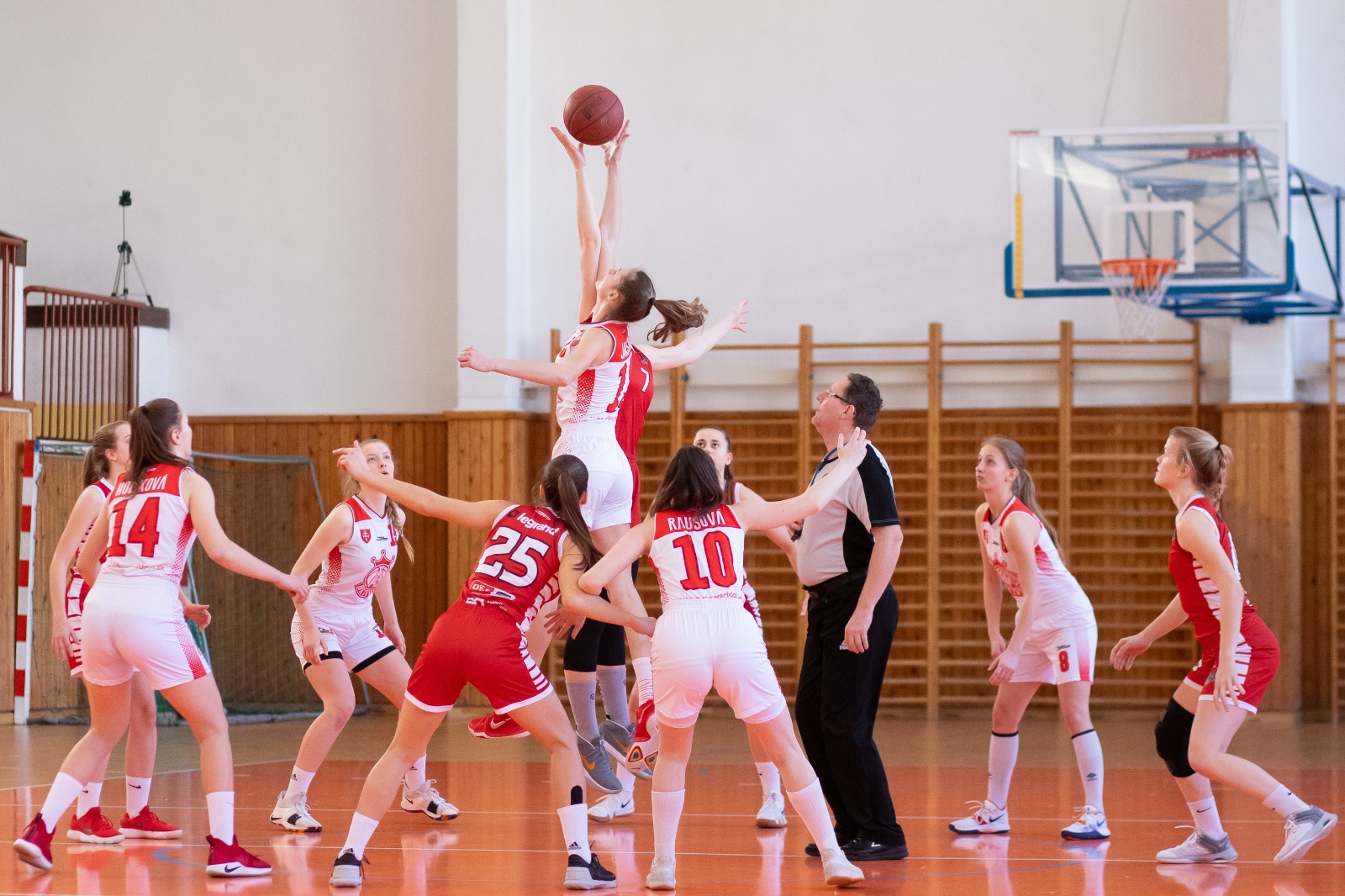
Preview of efforts done by NGO Jagori in India in collaboration with UNIFEM
JAGORI (’AWAKEN, WOMEN’) is a women’s documentation, training and communication centre established in 1984. Safe City Free of Violence Against Women and Girls’ – a joint action research initiative by Jagori, UNIFEM, UN Habitat along with the Delhi government.
Delhi has been designed in a very American way. Everything is oriented to accommodate the car. After dark no part of Lutyens’ Delhi is safe for women, although in the crowded areas of the Old City things are far more secure. Any area that caters only for single use and which has big boundary walls makes one feel totally unsafe. most of Delhi’s shopping areas – even the new malls – don’t rise from the streets like they do in many European cities.
The safety audit has been adapted to multiple settings and groups, carried out jointly with local government representatives, and evaluated, such that this tool is now internationally-recognized as a best practice‘.
There are three main principles which guide women‘s safety audits:
1) women are considered experts on their own environment and safety;
2) safety audits encourage local and context-specific solutions to issues of insecurity;
3) safety audits promote partnerships and joint solutions between women and their local governments.
Benefits:
• Changes to the physical environment to improve safety for women and the community as a whole;
• Changes in local programmes and policies that enhance their promotion of safety for women and the community in general;
• More skills and confidence for women who participate in audits;
• Greater public awareness of women‘s safety issues (Lambrick and Travers, 2008). Safe Cities 51 February 2010
Process:
A women‘s safety audit starts with a group of women.
Unsafe spaces might include a shopping centre parking lot, a pathway between residences, a water source, or a public housing development.
After the safety audit group has chosen an unsafe space, they go together to that space and note the factors or characteristics that they think make it unsafe
A dark street is more prone to be a risky place . Installation of sufficient number of street lights curbs the fear form women’s minds. Having shops rising from the footpath or pavement, you have a feeling of safety because you feel there is activity on the edge.
Delhi’s shopping areas are designed with the presumption that people will be driven to the shopping area whereas only 15 % of Delhi’s population drive vehicles, 85 % of people walk
When foot activity increases, so does safety more kiosks in areas where people wait for their transportation, for instance, in order to ensure ‘eyes on the street.
Findings for Transport Planners in Western Europe and North America
Poorly considered land-use zoning policy separates residential areas from employment locations, with a greater impact on women‘s mobility. Women make more complex journeys than men, often travelling to childcare, school, work, and shops. More than twice as many women as men are responsible for escorting children to school. Seventy-five per cent of bus journeys are undertaken by women. Only 30 % of women have access to the use of a car during the daytime Poor public transport and lack of caring facilities and shopping outlets near employment locations restrict women‘s access to the labour market. Women feel less safe than men being out alone after dark, especially in the inner city, or social housing complexes.
Inferences
• Creating public spaces with features that enhance women‘s safety and feelings of safety, and detract from features that cause women‘s insecurity and feelings of insecurity.
• Safety planning and design also involves more than just the concrete, physical features of a space .
• Safe Public transport should ensure that they make multiple places and destinations for diverse purposes. As a result, women‘s movement through the city has been described as trip-chaining.
• Safe public transit for women and girls should include improvisation of non-motorized forms of transport. That is, well-maintained footpaths, pedestrian streets, well-lit sidewalks, bicycle lanes etc.
ABOUT THE AUTHOR

AR. RITA MINHAS
Graduation in Architecture, AIIA
Master of City Planning IIT KHARAGPUR
Registered Valuer (Land & Building)
IBBI Registration Number: IBBI/RV/10/2021/13874
CORE COMPETENCE & INDUSTRY-SPECIFIC EXPERIENCE
Residential and commercial Architecture, Earthquake Safe Technology Implementation in construction, Master Planning, MIS, GIS Mapping, Neighbourhood Planning, Affordable housing, Estimation & Budgeting. She has 15 years of experience in Residential Architecture and the real estate industry which has provided her good understanding of a variety of projects. She has been handling Valuation Assignments for Land & Building for various Banks as well as companies under Company Act.

